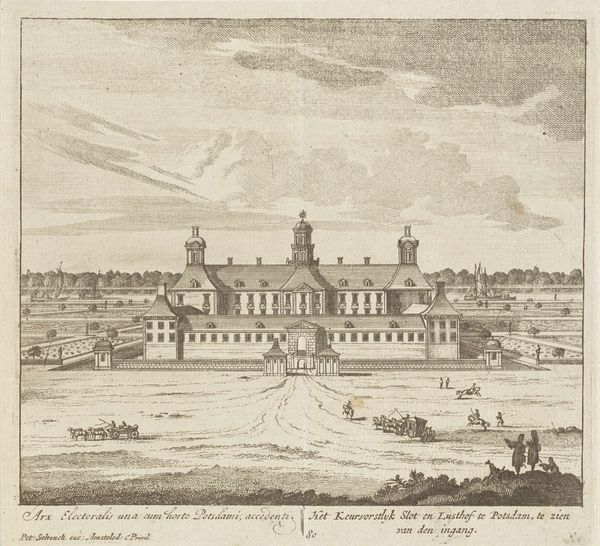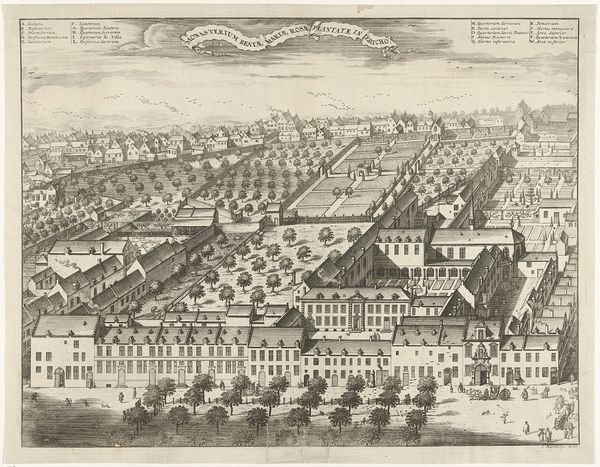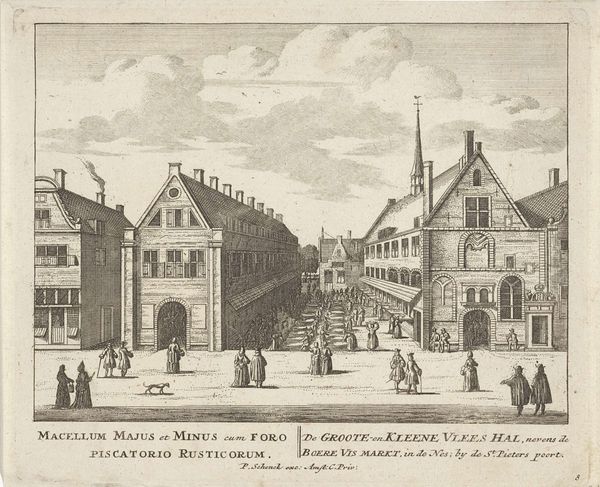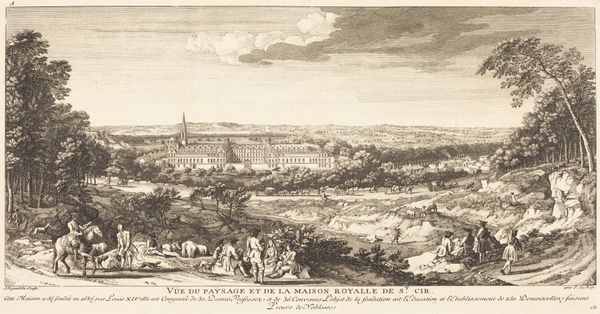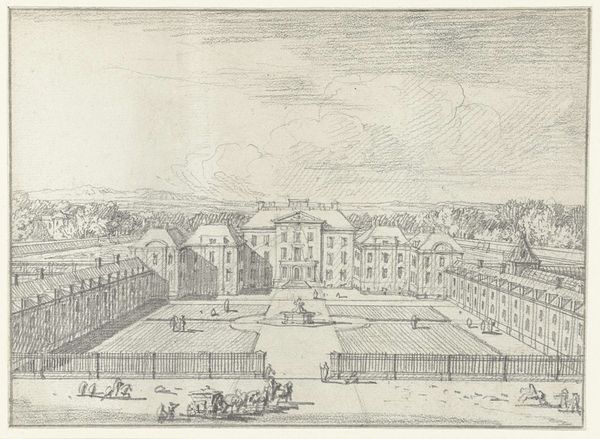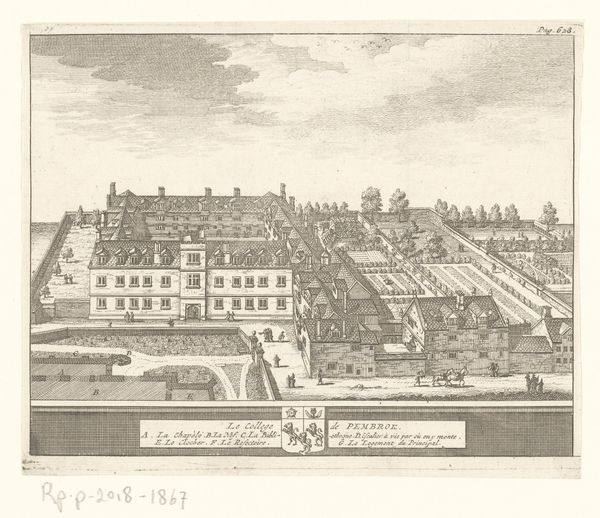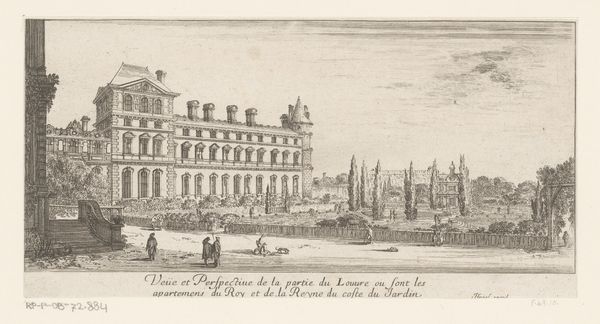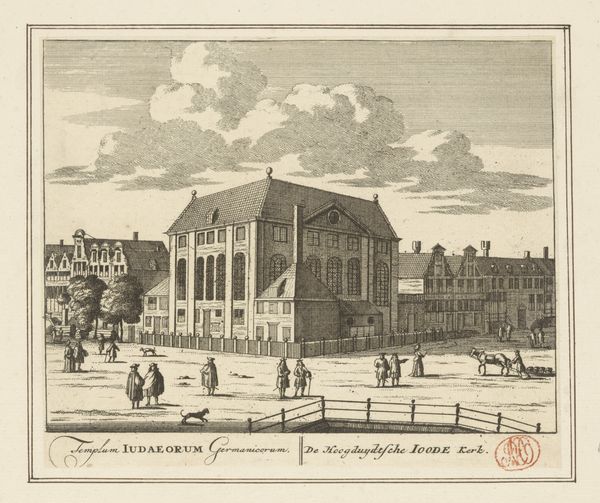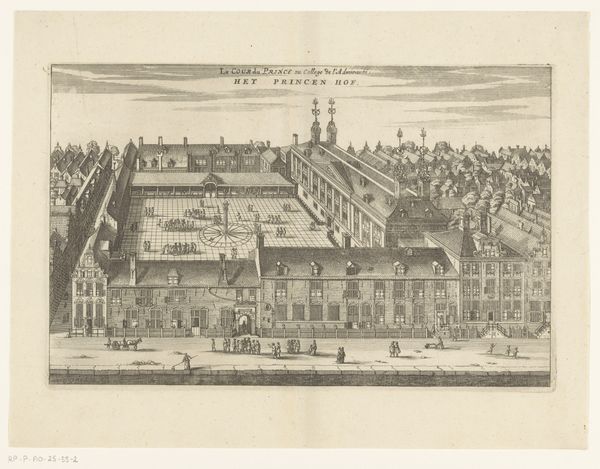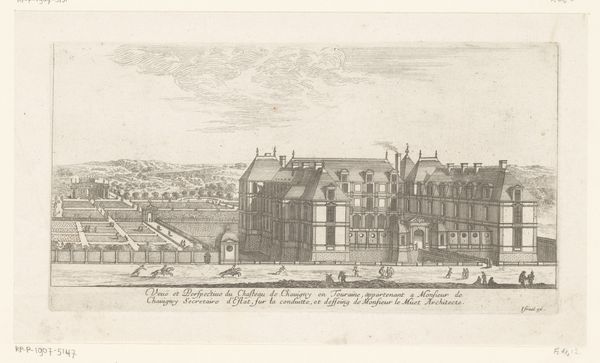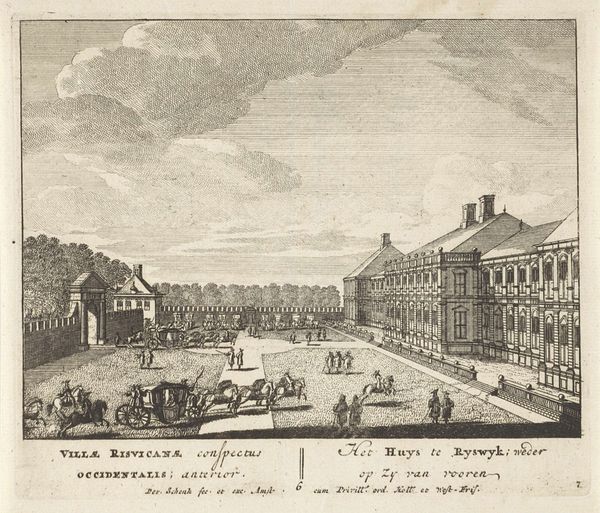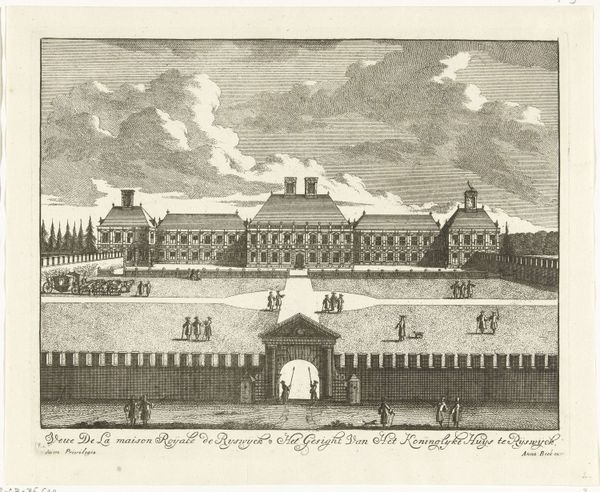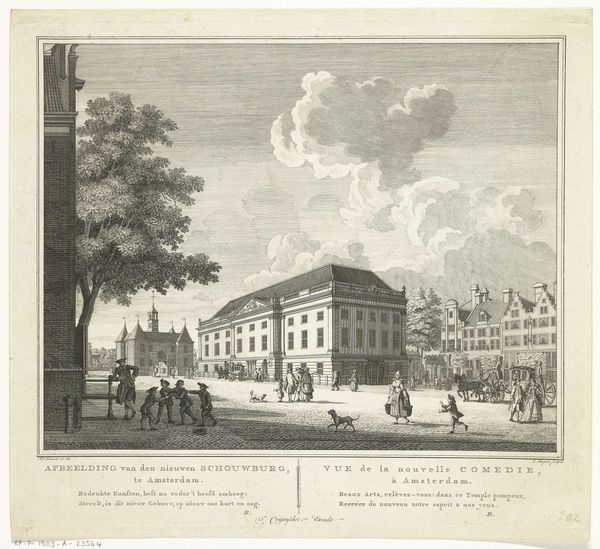
print, engraving, architecture
#
baroque
# print
#
old engraving style
#
cityscape
#
history-painting
#
engraving
#
architecture
Dimensions: height 165 mm, width 197 mm
Copyright: Rijks Museum: Open Domain
Editor: This engraving, titled "Thermen van Diocletianus," dates back to sometime between 1675 and 1711. It seems to depict a bird’s eye view of the Roman baths; its formality and scale evoke a sense of classical grandeur. What do you see in this piece that goes beyond just a pretty picture of some ruins? Curator: Well, I think it's crucial to remember that this image isn't simply about representing the past. Consider its production context – the late 17th, early 18th century. There was a real fascination in Europe with classical antiquity, but also a political element involved with these works of art. Engravings like this weren’t just aesthetic; they served as visual tools propagating an ideal vision of Roman power and civilization. Think about who this print was trying to reach? Editor: Ah, so it's about the cultural appropriation of the Roman Empire as a foundation myth for European empires and aristocratic power at that time. I see. The imposing scale becomes about projecting authority. Curator: Precisely. The choice of depicting Diocletian’s baths, renowned for their public nature, also implies an emphasis on social control and order – qualities that rulers would have liked to project. Look at the figures in the foreground and think about the audience this print catered towards – was it meant for the masses or the elite? Editor: Certainly seems geared towards a more privileged class, both artistically and given that text at the bottom. It is intriguing how an image of ruins also doubles as propaganda, reinforcing contemporary social structures through selective framing of history. Thanks for bringing the socio-political subtext into view. Curator: The politics of imagery, exactly. By understanding who made it, for whom, and why, we move past the aesthetic to explore the role of art in shaping our understanding of history. That’s the key thing to think about here.
Comments
No comments
Be the first to comment and join the conversation on the ultimate creative platform.
